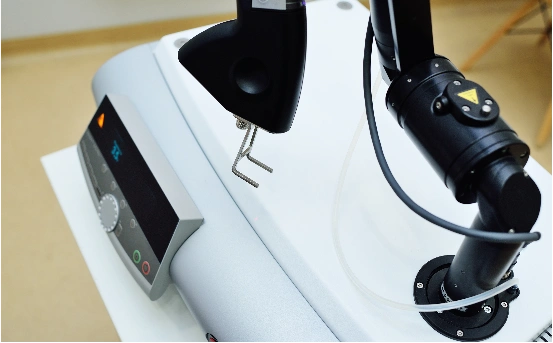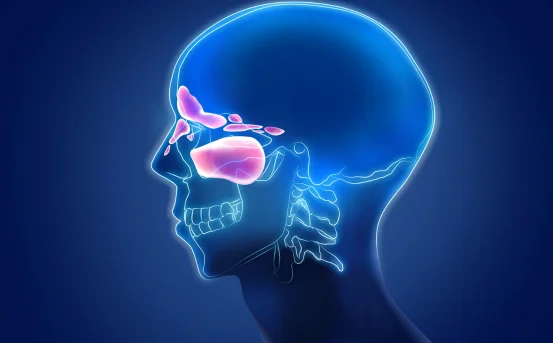Types of fractional co2 laser treatment has rapidly gained popularity in dermatology and cosmetic medicine due to its ability to rejuvenate skin, treat scars, and improve texture. This cutting-edge skin resurfacing technology uses carbon dioxide lasers to remove layers of damaged skin, promoting collagen regeneration and revealing healthier skin underneath.
But here’s what many people don’t realize fractional CO2 laser treatments come in different types, each designed to target specific skin concerns and depths. From more aggressive ablative lasers to gentler non-ablative options and hybrid technologies that combine radiofrequency with laser energy, understanding the types of fractional CO2 laser treatments is essential before committing to a procedure.
What Is Fractional CO2 Laser Treatment?
Fractional CO2 laser treatment is a skin resurfacing procedure that uses a carbon dioxide laser to deliver precise beams of light to the skin in a fractional pattern. This means only a portion (or “fraction”) of the skin surface is treated at a time, leaving surrounding tissue intact to promote faster healing.
The procedure removes the outer layers of skin and stimulates the body’s natural healing process. It boosts collagen production and reduces the appearance of :-
-
Acne scars
-
Wrinkles and fine lines
-
Stretch marks
-
Sun damage
-
Enlarged pores
-
Uneven skin tone
-
Skin laxity
Fractional CO2 lasers are more aggressive than other laser treatments but deliver more significant and longer-lasting results with fewer sessions.
Types of Fractional CO2 Laser Treatments
There are several types and subtypes of fractional CO2 laser treatments depending on the intensity, depth, and technology used. Here are the main categories:
Ablative Fractional CO2 Laser Treatment
This is the most aggressive type of CO2 laser treatment. It removes the top layer of the skin (epidermis) and part of the dermis to treat deeper wrinkles, severe acne scars, and advanced photoaging.
Ideal for :-
-
Deep wrinkles
-
Advanced acne scars
-
Sagging skin
-
Stretch marks
Pros :-
-
Dramatic results
-
Long-lasting skin rejuvenation
-
Reduces skin laxity
Cons :-
-
Requires more downtime (1–2 weeks)
-
May need anesthesia
-
Higher risk of side effects in darker skin tones
Non-Ablative Fractional CO2 Laser Treatment
Unlike ablative lasers, non-ablative CO2 lasers penetrate deeper into the skin without removing the surface layers. They’re less invasive, with shorter downtime but may require multiple sessions to achieve optimal results.
Ideal for :-
-
Mild to moderate wrinkles
-
Early signs of aging
-
Skin tone and texture improvement
Pros :-
-
Minimal downtime (2–3 days)
-
Less risk of hyperpigmentation
-
Can be done on darker skin types
Cons :-
-
More sessions needed
-
Subtle, gradual results
Fractional Micro-Ablative CO2 Laser Treatment
This technique delivers microscopic columns of laser energy, treating small skin sections while leaving surrounding areas untouched. It offers a balance between ablative and non-ablative results and is suitable for various skin conditions.
Ideal for :-
-
Acne scars
-
Enlarged pores
-
Sun-damaged skin
-
Textural irregularities
Pros :-
-
Less downtime than fully ablative lasers
-
Safer for sensitive skin areas
-
Fast recovery
Cons :-
-
Results develop over a few weeks
-
Requires post-procedure care to prevent complications
DeepFX and ActiveFX Fractional CO2 Laser
These are advanced fractional CO2 laser techniques often performed using the Lumenis UltraPulse laser system. They can be done individually or combined (known as TotalFX).
-
ActiveFX treats the superficial layers of the skin to reduce pigmentation, fine lines, and texture issues.
-
DeepFX penetrates deeper to treat scars and wrinkles.
Ideal for :-
-
Acne scarring
-
Wrinkles
-
Deep pigmentation
-
Skin tightening
Pros :-
-
Customized treatment depth
-
Safe and effective for aged skin
-
Often performed in a single session
Cons :-
-
Moderate downtime (5–7 days)
-
Sun sensitivity post-treatment
Fractional CO2 Laser with RF (Radiofrequency)
This is a hybrid technology that combines CO2 laser with radiofrequency energy to enhance skin tightening and collagen stimulation. The RF energy heats the deeper skin layers for firmer, lifted skin.
Ideal for :-
-
Skin laxity
-
Aging signs
-
Facial rejuvenation
-
Neck and jawline tightening
Pros :-
-
Dual technology for better results
-
Shorter healing time than traditional CO2 lasers
-
Suitable for delicate areas
Cons :-
-
Slightly more expensive
-
May need touch-ups for best results
How to Choose the Right Type of Fractional CO2 Laser Treatment?
Choosing the appropriate type of fractional CO2 laser depends on several factors :-
-
Your skin type and tone
-
The severity of skin issues
-
Downtime you’re comfortable with
-
Budget and treatment goals
-
Past response to skin treatments
A consultation with a certified dermatologist or cosmetic surgeon is crucial to determine the most effective treatment for your skin’s needs.
What to Expect During the Procedure?
Here’s a brief overview of what a typical fractional CO2 laser treatment session involves :-
Before the Procedure :-
-
A detailed consultation and skin analysis
-
Pre-treatment photos
-
Topical anesthetic applied (or local anesthesia for aggressive treatments)
-
Protective eye gear provided
During the Procedure :-
-
The laser handpiece is passed over the treatment area
-
Patients may feel a warm or prickling sensation
-
The session usually lasts between 30 to 90 minutes, depending on the treatment area
After the Procedure :-
-
Mild redness, swelling, and peeling are normal
-
Downtime varies from 2 days to 2 weeks
-
Use of sunscreen, moisturizers, and prescribed creams is essential
Benefits of Fractional CO2 Laser Treatment
-
Stimulates natural collagen production
-
Improves overall skin tone and texture
-
Reduces fine lines, wrinkles, and scars
-
Minimally invasive compared to surgery
-
Safe for various parts of the body (face, neck, chest, hands)
Risks and Side Effects
Although fractional CO2 laser is generally safe, some side effects may occur :-
-
Temporary redness and swelling
-
Skin peeling or crusting
-
Risk of infection if not properly cared for
-
Post-inflammatory hyperpigmentation, especially in darker skin types
Always follow post-treatment instructions and avoid sun exposure during the recovery phase.
Conclusion
Fractional CO2 laser treatments offer powerful skin rejuvenation with options tailored to individual needs. Whether you’re dealing with acne scars, fine lines, or skin laxity, there’s likely a fractional CO2 laser type suitable for you.
From ablative to non-ablative, micro-ablative to hybrid technologies with RF, this versatile treatment can deliver smoother, tighter, and more youthful-looking skin when performed by an experienced professional.























